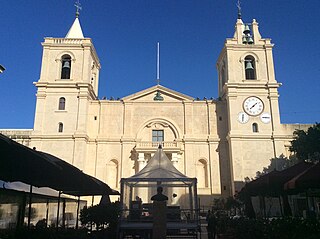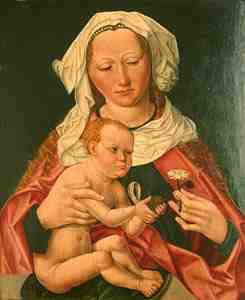This article may be expanded with text translated from the corresponding article in German. (October 2012)Click [show] for important translation instructions.
|

Absolon Stumme (died 1499) was a Late Gothic painter from Northern Germany who worked in Hamburg.

International Gothic is a period of Gothic art which began in Burgundy, France, and northern Italy in the late 14th and early 15th century. It then spread very widely across Western Europe, hence the name for the period, which was introduced by the French art historian Louis Courajod at the end of the 19th century.
Northern Germany is the region in the northern part of Germany which exact area is not precisely or consistently defined. It varies depending on whether one has a linguistic, geographic, socio-cultural or historic standpoint. The five coastal states are regularly referred to as Northern Germany. Though geographically in the northern half of Germany, Westphalia, Brandenburg, and the northern parts of Saxony-Anhalt are rarely referred to as Northern Germany and instead are almost always associated with Western Germany and the historic East Germany respectively.

Hamburg is the second-largest city in Germany with a population of over 1.8 million.
Absolon Stumme married into the Bornemann family of artists, becoming the second stepfather of Hinrik Bornemann, who died the same year as he did. After their deaths the Hamburg Cathedral altarpiece, upon which they had been working, was finished by Wilm Dedeke. It is debated by 20th-century art historians which of the two is recorded as the Master of the Hamburg cathedral altar. [1] Both are also associated with the Master of the Lüneburg foot washing.
Bornemann is a German surname. Notable people with the surname include:

Hinrik Bornemann was a Northern German Late Gothic painter. He was the son of Hans Bornemann, who died in 1474. After his father's death his mother was thrice remarried to painters- to Hinrik Funhof, to Absolon Stumme, and then finally to Wilm Dedeke. His main work was the Altarpiece of St. Luke (Lukas-Altar) for St. Mary's Cathedral in Hamburg, now shown in St. James the Greater Church. Upon his death in 1499 it was left unfinished, and was completed by Wilm Dedeke.

An altarpiece is an artwork such as a painting, sculpture or relief representing a religious subject made for placing behind the altar of a Christian church. Though most commonly used for a single work of art such as a painting or sculpture, or a set of them, the word can also be used of the whole ensemble behind an altar, otherwise known as a reredos, including what is often an elaborate frame for the central image or images. Altarpieces were one of the most important products of Christian art especially from the late Middle Ages to the era of the Counter-Reformation.












